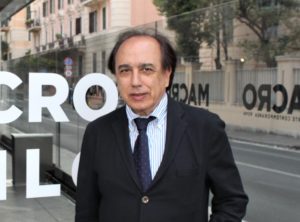Where will you live?
Soul homes and cities with a plural infinity
The development of a new idea of future
I will live in intelligent, flexible, changeable, interconnected homes and cities, where I will be able, at last, to foster an ethics of mind and body in search of a plural infinity, of the culture, signs and languages of mankind.
I will inhabit spaces and places that can be grown like ‘gardens of the mind’, soul homes and cities, a harmonic synthesis of an existential dimension between identity and beauty. A different dimension rethought on the balance of values and on a dialogue between psyche and physicality, between man and environment.
I will therefore nurture places and territories capable of regaining a sense of empty and full, and of combining art, architecture, technologies, work, culture and nature into an idea of polis able to interconnect with the multiplicity, complexity and interculturality of the new glocal condition; a creative meeting place articulating differences and identities as founding values for society.
The pandemic, with its impetuous and terrifying modalities, has revealed the limits of the urban condition and the urgency for a different dimension of the space for living and for human relationships, that is a ‘dimension of values’ against the non-values of denial, centred on the consumerist notion the globalised world has assumed as its opposite rationale. A future marked by possible emergencies is now forcing us to rethink all of that.

The metron is therefore wrong, because misleading; it has geometrised the world spoiling it of its humanity and spirituality. The post-Covid-19 intelligent home won’t coincide with the normative, functional and technical criteria of the rationalist style anymore. We need to give new form to the body and soul of the cities, of the architecture, of the home; hence to think of a multiform habitat, adaptable to any condition and change, charged with a beauty that synthesises a new relationship between man, nature and artifice.
This is what I call a plural home, able to adapt to the global reality of the communication circuit, ready to reinvent itself in the face of the challenges and unknown variables of the future. A home endowed with all sorts of technological and digital devices, conceived with spaces equipped to meet contemporary work, learning and health needs, as well as designed to facilitate communicative exchange and socialisation. A home which is not the ‘paradisiac’ place of the individual sphere anymore, but a ‘shared’, multifunctional, self-sufficient space with a suggestive structure, a home to be completely renewed.
A home which is a ‘slice of the city’, not to be contained by it but to open itself up to a new idea of a polis free from pollution and from the perverse conditionings of a senseless development. By redesigning our homes we will redesign our cities and the public space, we will dispel the notion of centre and suburbs, we will save the idea of city.
In the next decades we will more and more need to reduce distances between home, the road, the network and the internet; and to rebuild the identity of a man able to adapt to the new global reality. These are the third-millennium cities, ‘cities of art and intelligent houses’.
I will therefore inhabit plural forms as an ensemble of assonances and dissonances, of unity and disunity, a space where communal ideas and projects impose themselves in their search of new boundaries and room for freedom. A multipolar vision of time and space, where plural interferences and connotations interact in a scenario prompting a new creative alphabet of thought and form for a different ethical and aesthetic culture.
As an artist, architect and theorist, I have always thought of form as a transfiguration of the human thought, a creative vision of global unity, beyond any formalism and aestheticism.
Faced with the dominant formal beauty of the aesthetic, for years I have responded with the plural beauty of the artistic, with its visible and enlightening transversality. That’s why I have always pursued form rather than style, which for many has soon become a haven and triumph of self-referentiality, a denial of form, architecture and culture. This way the propaganda of powers has destroyed identities, places, values, cities and landscapes.
Singing outside the choir and maintaining a strongly heretical position, throughout the years I have defended the opulence and allure of a new educational identity launching, together with many travelling companions, a different project culture, combining research and experimentation, criss-crossings and contaminations. On many occasions, against the risks of an urban deviation without precedents in the history of city planning, I have defended the unity and balance of a plural beauty built in the course of centuries, denouncing the alienating condition of ‘outsiders’ many communities are forced to live in, deprived of identities, cultures and vocations.
And even if I have never loved plurality, I have always looked for the plural, the unity of differences, the unity of impossible paths, the dialogue and the perspectives of diversities, the upset of upside-down horizons, the heretical paths of transversality and multiple articulation, as art of building.
That’s why I will inhabit ‘soul homes and cities’ with a plural infinity.

